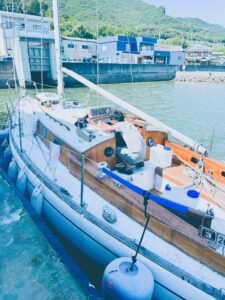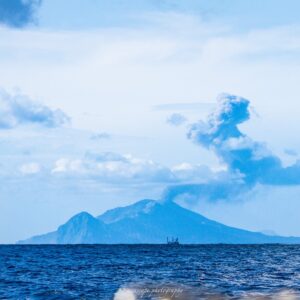On the red line, there is no wind.
I recommend using the engine because the speed is only 2knots per hour.
24 hours x 2knots = 48 miles we can go ahead in an hour.
The distance of Panama to Nukuhiva island is over 5000 miles so we need a minimum of 100 days.
We didn’t have food enough for it so we had to be on the diesel engine.
You need a decision that which way do you want to go, go up to North or go down to South. And you would catch the prevailing westerlies or the trade wind. It depends on where you are going, Hawaii islands or Marquesas islands. Anyway, it is a common style of the across the pacific ocean because everyone said about above.
When you use the diesel engine, you should record
・How many litters did you use and do the diesel remain in the tank
・How long did you use the engine
・Where are you now

赤道上に風がない場合、どう切り抜けるべきか。
そのまま潮に乗って流されていても、進むのは時速2海里。
これで 距離を計算したら、1日48海里を進む。
パナマからマルケサス諸島まで5000海里以上なので、100日以上の日数を要しますが、それでは食料が足りません。
風がない場合は時間と速度を計算し
「あ、無理だ。」と感じたら、エンジン機走で進む事をお勧めします。
そんな時は無理をせず、エンジンを点火して、
ただひたすらに南下、または北上し、貿易風もしくは、偏西風のあるエリアへ進む事を強く勧めます。(ハワイへ行くなら北上、タヒチへ行くなら南下。)
また、どこを見渡しても海しかない場所では
・燃料をどれぐらい使って、どれぐらい残っているのか
・今、何時間エンジンを使って
・どこまで南下したか
を、紙に記録する必要があります。
燃料をあるだけ使ってしまえば、もしもの時に何もできません。
燃料がどれだけ残っているかで、この先の「もしも」の時にエンジン機走できるか否かの決め手になります。
参考までに〜
(こちらの投稿は次の航海時に備えて、書いているので、わかりにくい点はご了承願います。)


